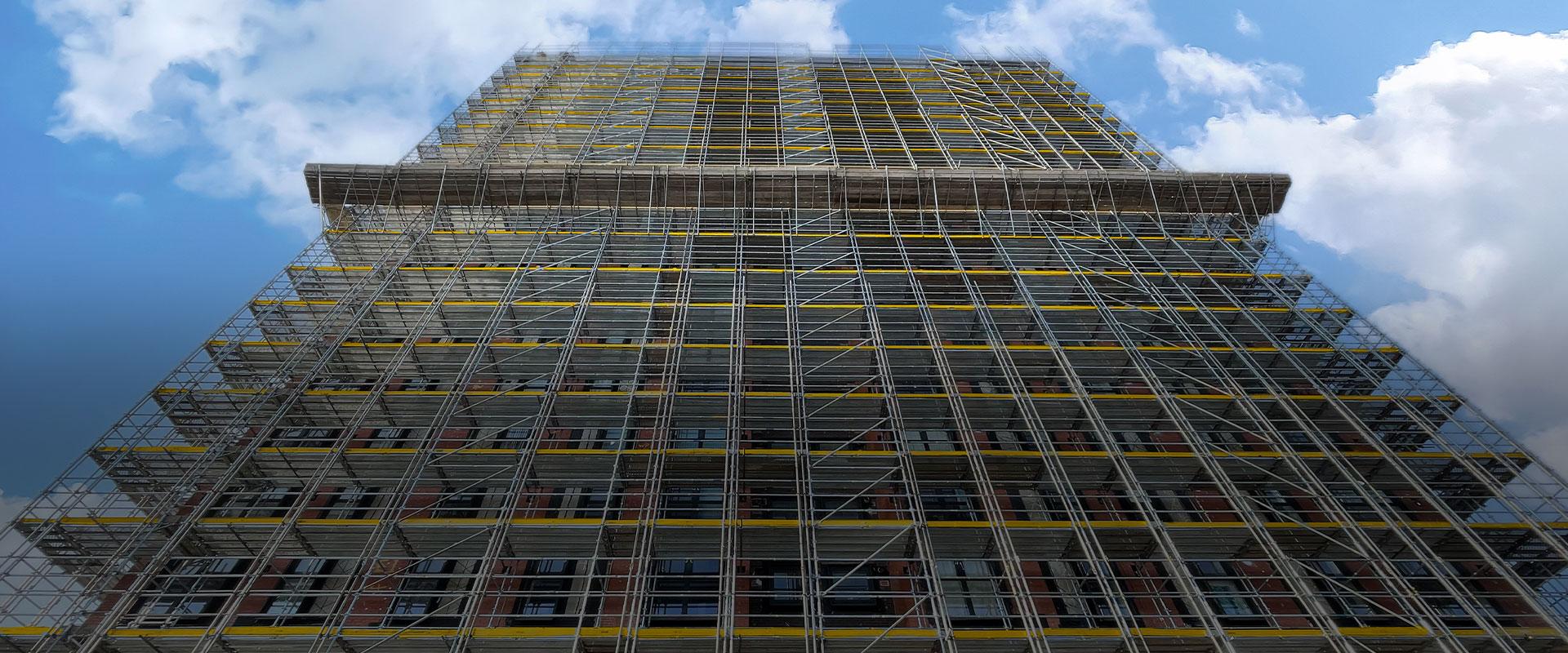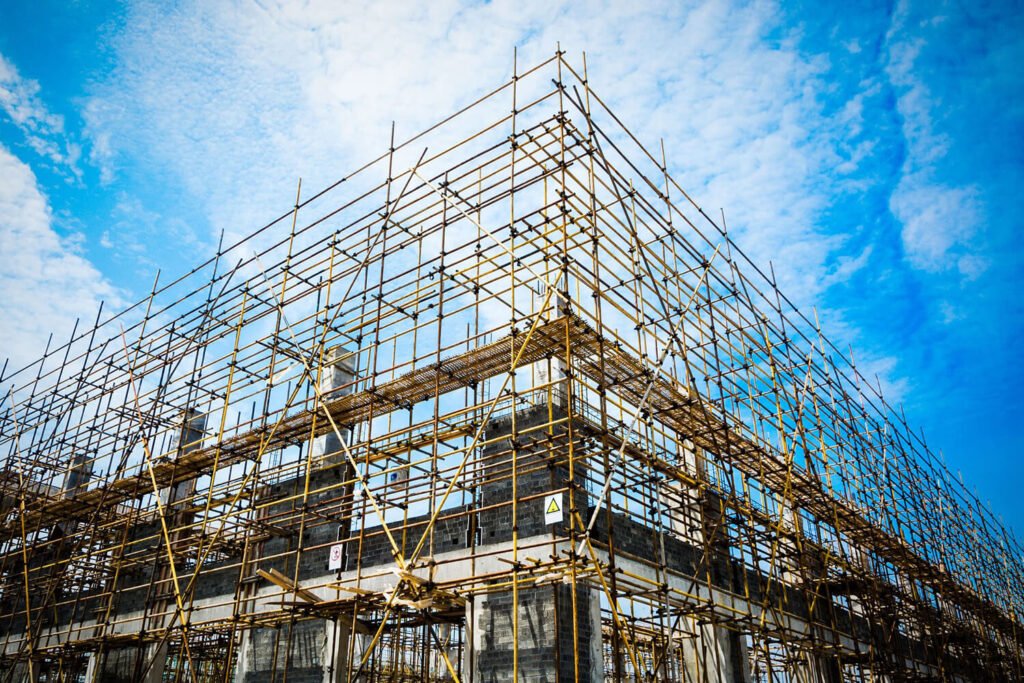A Comprehensive Overview to the Essential Functions of Scaffolding in Modern Building And Construction
The landscape of contemporary construction significantly relies upon efficient scaffolding systems that focus on technology, efficiency, and security. As tasks expand in intricacy, understanding the important features of scaffolding comes to be critical for guaranteeing worker security and enhancing job timelines. This overview discovers numerous kinds of scaffolding, highlights crucial safety attributes, and examines product improvements that add to efficiency and sustainability. Nonetheless, the effects of these elements extend far beyond mere construction techniques, prompting a closer look at how they affect overall project success and worker well-being.
Sorts Of Scaffolding
Although scaffolding systems can differ extensively in design and application, they usually come under a number of distinct groups that cater to different construction requirements - Scaffolding. One of the most common kinds consist of supported scaffolding, put on hold scaffolding, and rolling scaffolding
Supported scaffolding contains systems sustained by a structure of poles, which supply a secure and raised working surface area. This kind is normally utilized for jobs that need considerable altitude, such as bricklaying or exterior paint.
Suspended scaffolding, alternatively, is made use of for jobs needing accessibility to high elevations, such as cleansing or fixing structure facades. This system hangs from a rooftop or an additional structure, permitting workers to lower or increase the platform as needed.
Rolling scaffolding functions wheels that permit for simple mobility across a work site. It is especially useful for jobs that call for constant moving, such as indoor work in large areas.
Each kind of scaffolding is designed with certain applications in mind, ensuring that building tasks can be accomplished effectively and successfully. Comprehending these groups is essential for picking the suitable scaffolding system to satisfy both job requirements and site conditions.
Key Security Features
Security is vital in scaffolding systems, as the prospective dangers connected with functioning at heights can lead to significant accidents otherwise effectively handled. Key safety and security attributes are crucial to guarantee the health of workers and the integrity of the building site.
Firstly, guardrails are critical. These obstacles provide a physical guard against drops, dramatically lowering the threat of major injuries. Furthermore, toe boards are commonly utilized to stop devices and materials from dropping off the scaffold, shielding employees listed below.
An additional essential part is using non-slip surface areas on systems. This function enhances hold, particularly in adverse weather, consequently lessening the probability of slips and drops. Additionally, access ladders ought to be firmly placed to facilitate risk-free access and leave from the scaffold.
Normal examinations and maintenance of scaffolding systems are also important. These assessments guarantee that all parts are in excellent problem and operating appropriately, dealing with any kind of wear or damages without delay.
Lastly, correct training for all employees associated with scaffolding operations is necessary to ensure that they comprehend safety methods and can recognize prospective hazards. Scaffolding. Jointly, these functions develop a much safer working environment and considerably alleviate threats connected with scaffolding
Product Technologies
Advancements in material science have actually considerably influenced the scaffolding industry, boosting both security and effectiveness in modern-day construction. The introduction of high-strength steel and aluminum alloys has actually revolutionized typical scaffolding systems.
Additionally, ingenious composite products, such as fiberglass-reinforced plastics, have arised as feasible options. These products are resistant to rust and environmental destruction, hence extending the life expectancy of scaffolding systems, especially in rough climate problems. Using such materials adds to decrease maintenance prices and makes certain consistent performance with time.


Layout Factors To Consider
Considering the intricacies of modern building and construction jobs, reliable scaffolding layout is extremely important to ensuring both capability and safety. Style factors to consider must incorporate different elements, including tons capability, elevation, and the specific requirements of the building site. Each job offers distinct difficulties, requiring a flexible technique to scaffolding systems that can adjust to differing conditions.
Structural honesty is essential; therefore, designers have to compute the loads that the scaffolding will sustain, consisting of employees, products, and equipment. The selection of products plays a vital function in guaranteeing the scaffolding can withstand these loads while staying durable and light-weight. Additionally, the layout needs to permit simple accessibility and egress, promoting the smooth movement of materials and employees.
Safety features, such useful link as guardrails and non-slip surface areas, need to be incorporated to decrease risks of accidents. Furthermore, the design has to think about the surrounding setting, including possible risks and adjacent structures. By dealing with these layout considerations, building and construction companies can boost the effectiveness of scaffolding systems and promote a much safer working setting, eventually adding to the total success of the project.
Upkeep and Examinations
The efficiency of scaffolding systems expands beyond first scaffolder belt design and execution; continuous upkeep and regular assessments are vital to ensuring their proceeded efficiency and safety and security throughout the period of a task. Normal inspections must be conducted by certified personnel to determine any signs of wear, damage, or instability that can jeopardize the honesty of the scaffolding.
Maintenance protocols should consist of regular checks of structural components, such as planks, frames, and fittings, ensuring that all aspects continue to be complimentary and secure from deterioration or other deterioration. Furthermore, the functionality of safety and security functions, such as guardrails and toe boards, have to be assessed to make certain compliance with security guidelines.
Documentation of all examinations and maintenance tasks is crucial for liability and regulatory compliance. An organized method to record-keeping not only aids in tracking the condition of the scaffolding yet also offers required proof in the event of an event.
Eventually, establishing a detailed maintenance and assessment schedule will substantially minimize the risk of crashes and boost the general security of the building website. By focusing on these methods, building and construction managers can secure workers and promote the project's stability.

Verdict
To conclude, the vital features of scaffolding in modern building and construction encompass a variety of critical elements, consisting of varied kinds, crucial safety systems, material technologies, and thoughtful design factors to consider. Highlighting safety via guardrails and non-slip surfaces, along with developments in products like high-strength steel, enhances both efficiency and sustainability. Normal maintenance and examinations are essential for ensuring structural honesty and safety and security on construction websites, ultimately assisting in reliable task execution and promoting the well-being of employees.
The landscape of modern construction progressively depends on reliable scaffolding systems that focus on efficiency, innovation, and safety and security.Advancements in product scientific research have actually considerably influenced the scaffolding industry, enhancing both safety and performance in modern-day building. Generally, these material developments not only enhance the efficiency and safety of scaffolding systems but also straighten with the sector's press in the direction of sustainability, as several modern-day products are designed to be a lot more eco friendly.
Considering the complexities of modern-day building projects, effective scaffolding layout is paramount to making sure both performance and safety.In verdict, the necessary attributes of scaffolding in modern building and construction include a range of critical aspects, including varied kinds, essential safety and security systems, product advancements, and thoughtful design considerations.